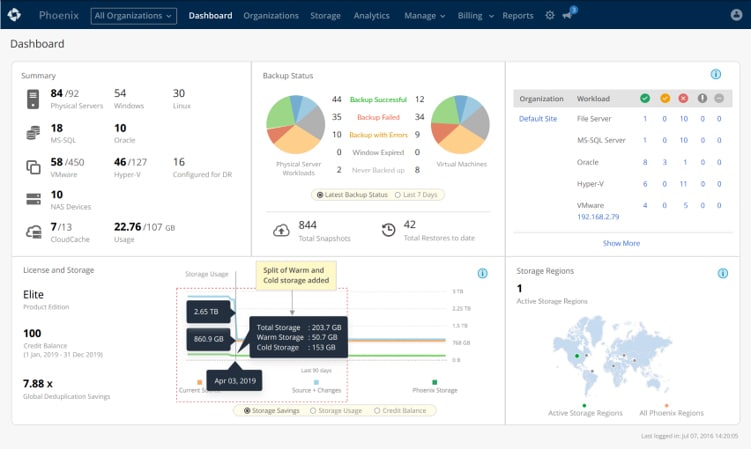 Today Druva announced what it calls the industry’s first multi-tier intelligent data storage in the cloud. This storage tiering supports all layers of AWS storage, including S3, Glacier and Glacier Deep Archive. The company also announced built-in disaster recovery (DR) on AWS.
Today Druva announced what it calls the industry’s first multi-tier intelligent data storage in the cloud. This storage tiering supports all layers of AWS storage, including S3, Glacier and Glacier Deep Archive. The company also announced built-in disaster recovery (DR) on AWS.
Today Druva announced what it calls the industry’s first multi-tier intelligent data storage in the cloud. This storage tiering supports all layers of AWS storage, including S3, Glacier and Glacier Deep Archive. The company also announced built-in disaster recovery (DR) on AWS.

Data is growing rapidly and while it can all be useful; all data is not created equal. Buying a one-size-fits-all storage can be less than optimal while at the same time raise users’ costs. Druva offers a cloud-based intelligent tier storage solution that moves data to hot or cold storage to get the most band for users’ bucks without disruption. Druva claims this can result in a TCO reduction up to 50%. The intelligent storage tiering also offer end-to-end data protection through machine learning, policy management via one-click actions across all tiers, and easier management through a central dashboard to manage archiving, deletion and governance processes. Druva’s SaaS is built completely on AWS and leverages AWS cloud storage tiers like AWS S3, Glacier, and Deep Archive.
The company also announced a DRaaS built on AWS. This new DRaaS helps users protect data at scale while also enabling them to hit regulations specific to their business. Druva claims RTO of ten minutes and ROP of an hour across any AWS region and accounts. Druva’s DRaaS could also help lower costs by the elimination of on-site hardware and software.
Benefits of Druva’s DRaaS on AWS include:
- Seamless user experience with one-click, automated recovery, testing and built-in orchestration and runbook execution.
- Faster recovery of business data through distributed global infrastructure available on-demand, support for hybrid workload failback (such as VMware Cloud on AWS or on-premises data centers), and the ability to recover data within a Virtual Private Cloud (VPC) and cloning VPCs across AWS regions or accounts.
- Efficient use of time and resources with built-in runbook orchestration, automation of failover compliance testing and efficient failback.
- Lower TCO of up to 50 percent compared with on-premises solutions.
- Fast deployments and hassle-free use with no downtime for software installation, upgrades or patches.
- Centralized reporting and audit ensuring that stakeholders can easily certify business continuity plans.
Sign up for the StorageReview newsletter
